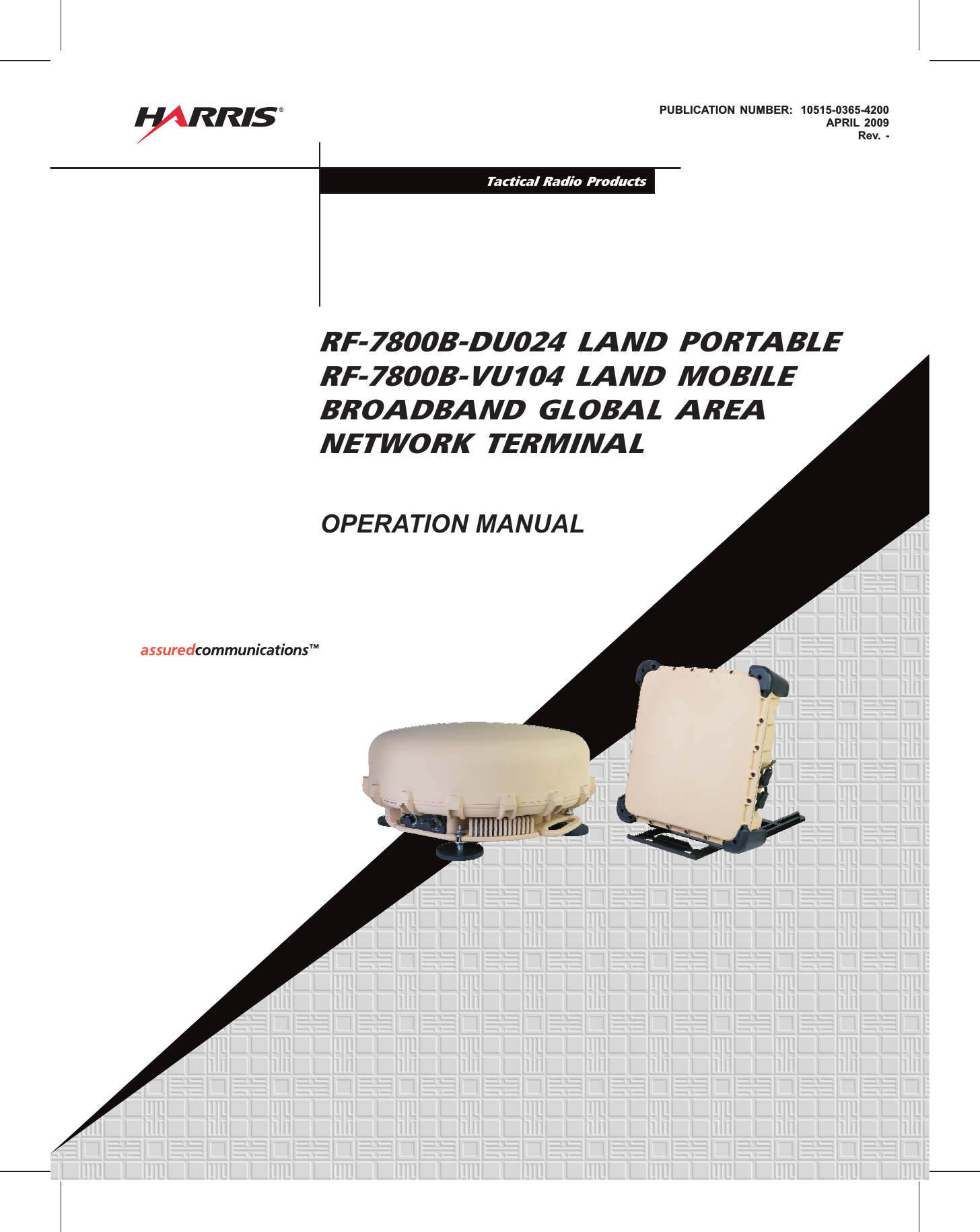Harris RF Communications Division RF-7800B-VU104 Land Portable BGAN Terminal User Manual user man part 4
Harris Corporation RF Communications Division Land Portable BGAN Terminal user man part 4
Contents
- 1. user man part 1
- 2. user man part 2
- 3. user man part 3
- 4. user man part 4
user man part 4
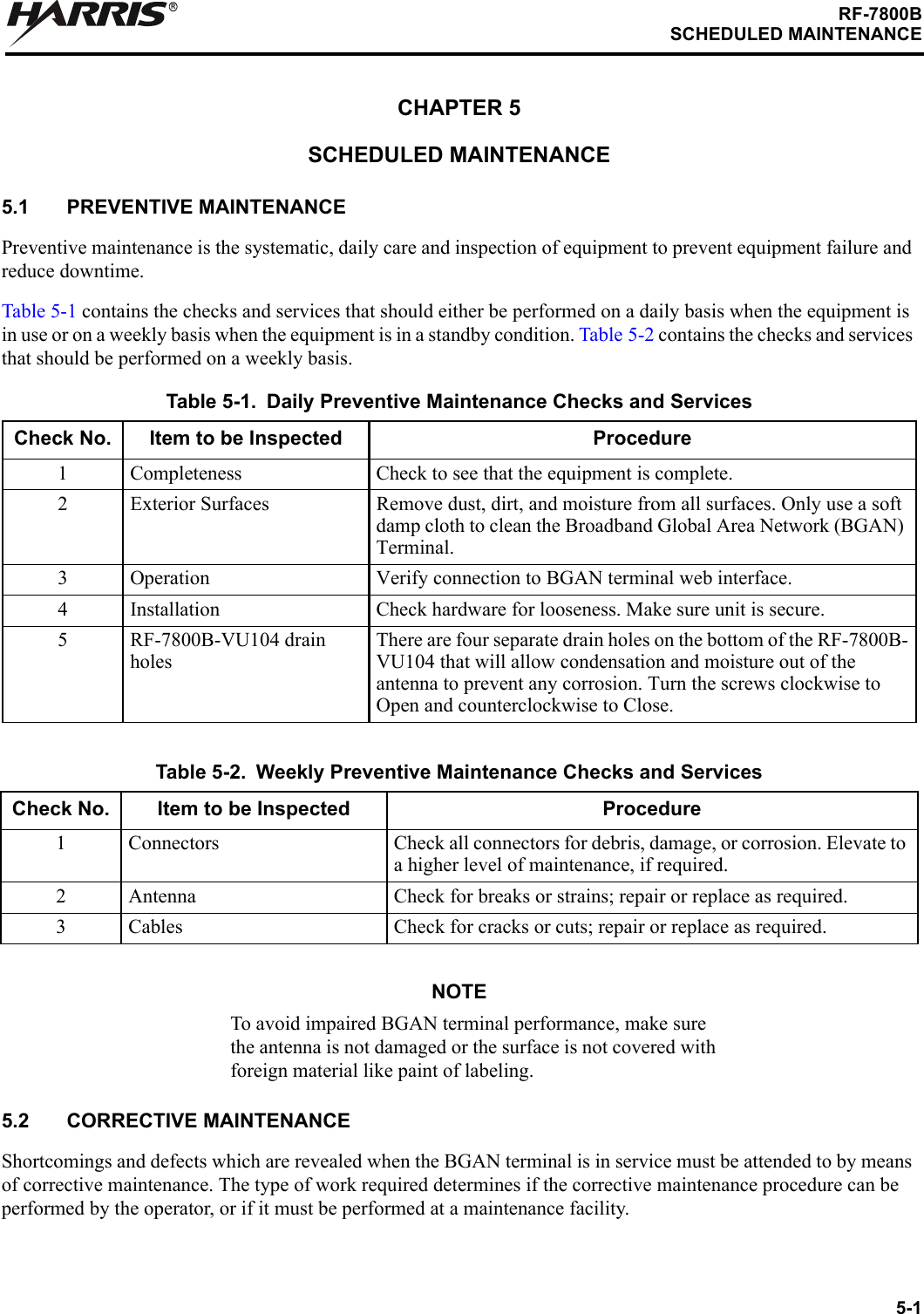
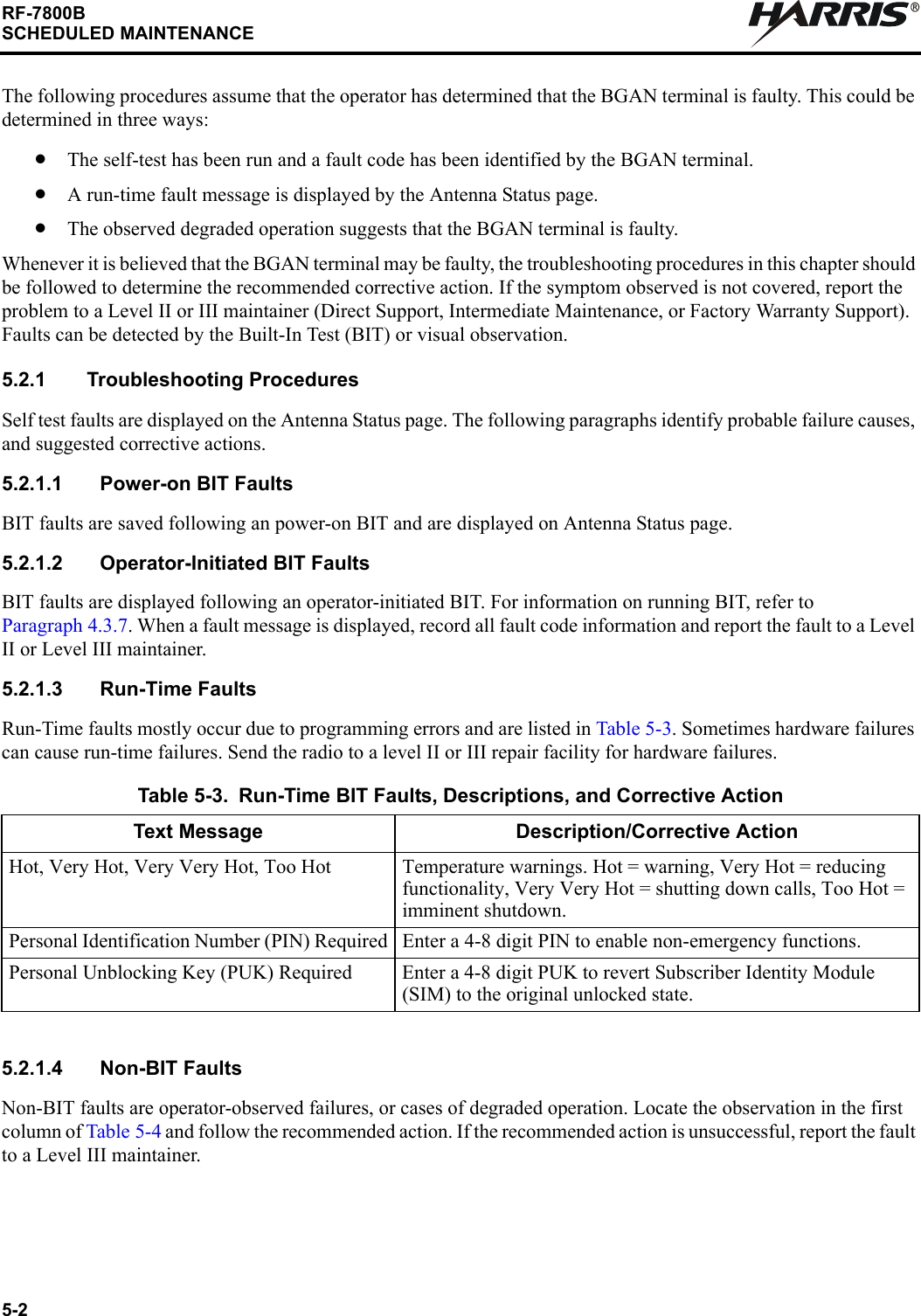
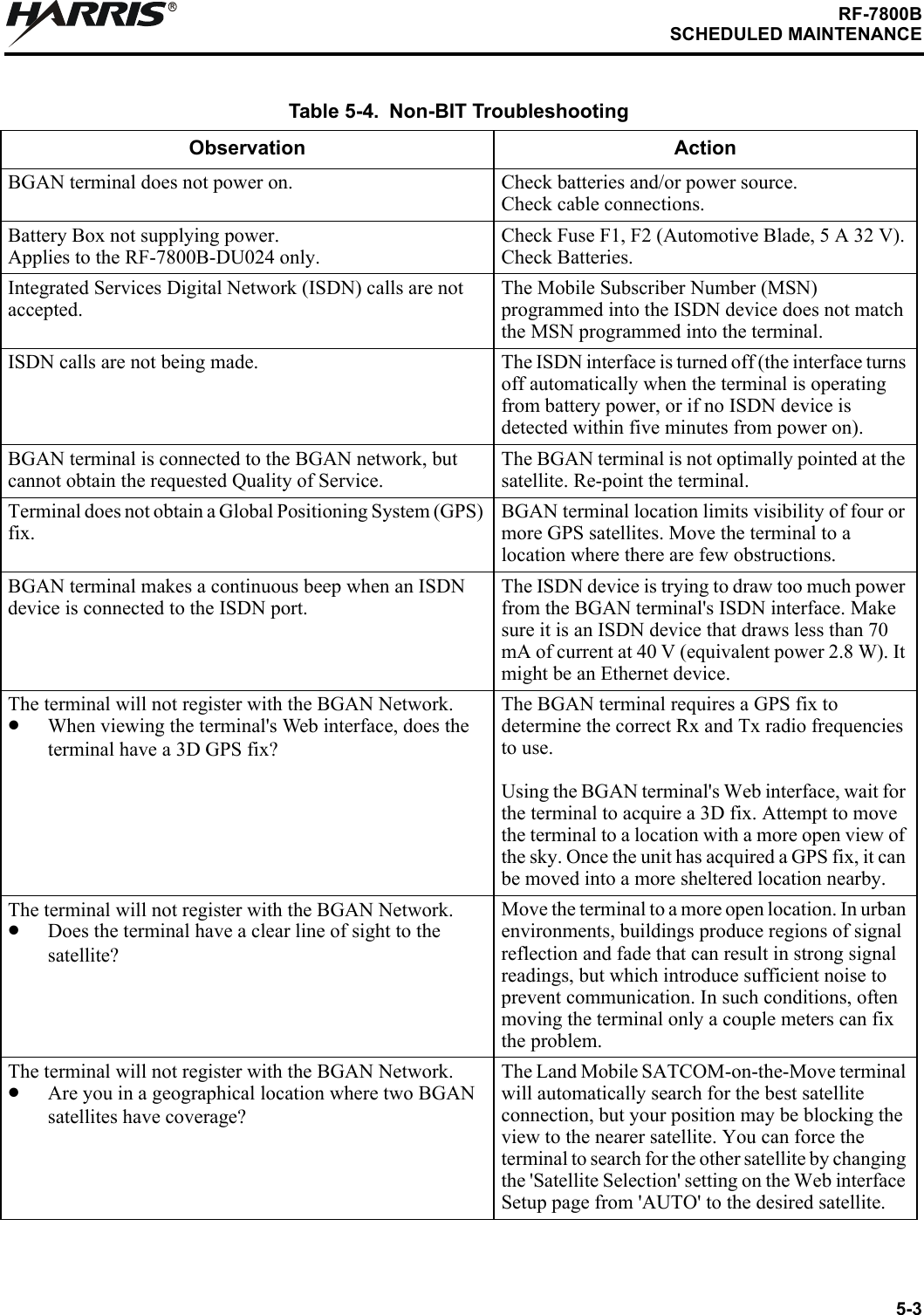
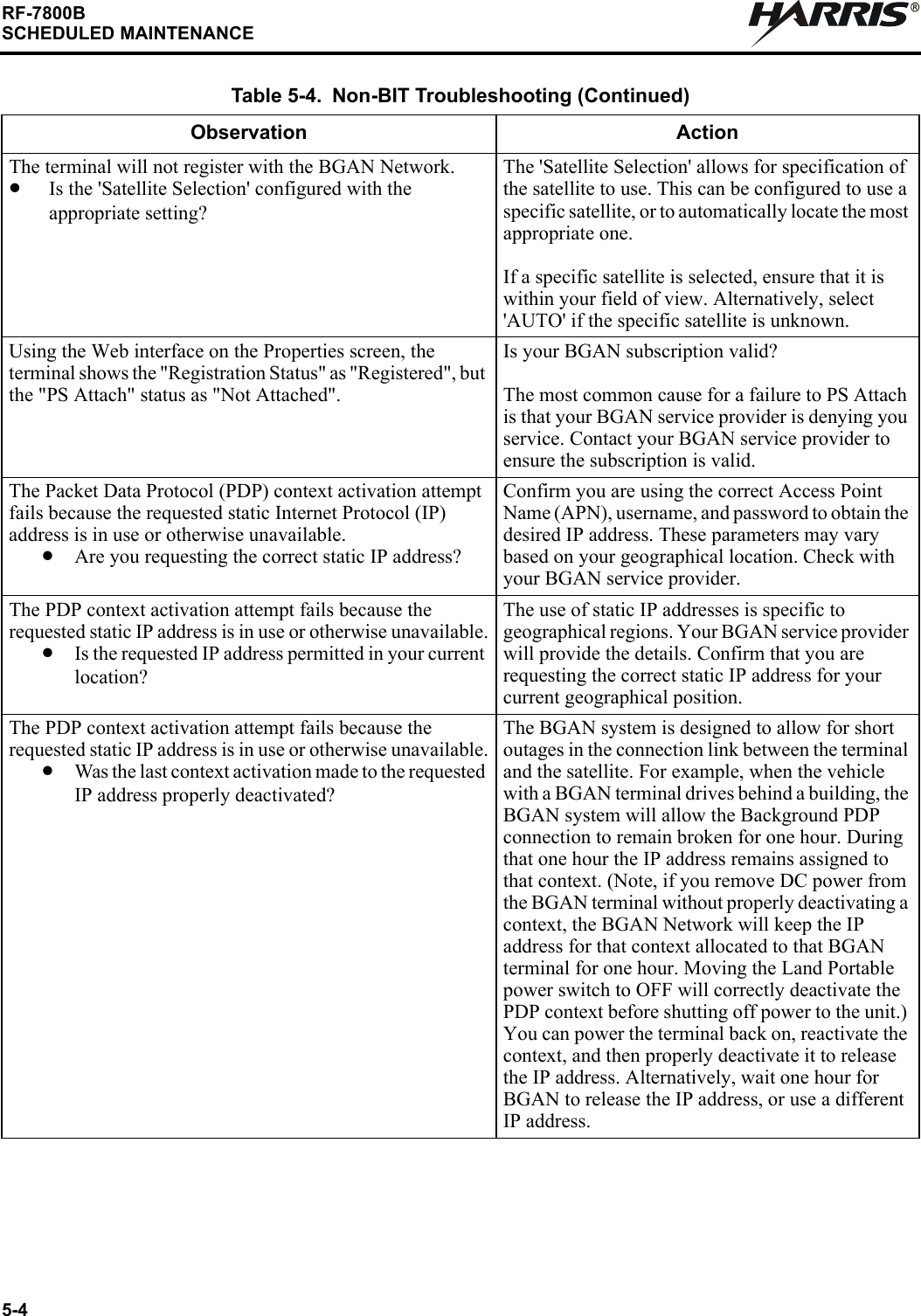
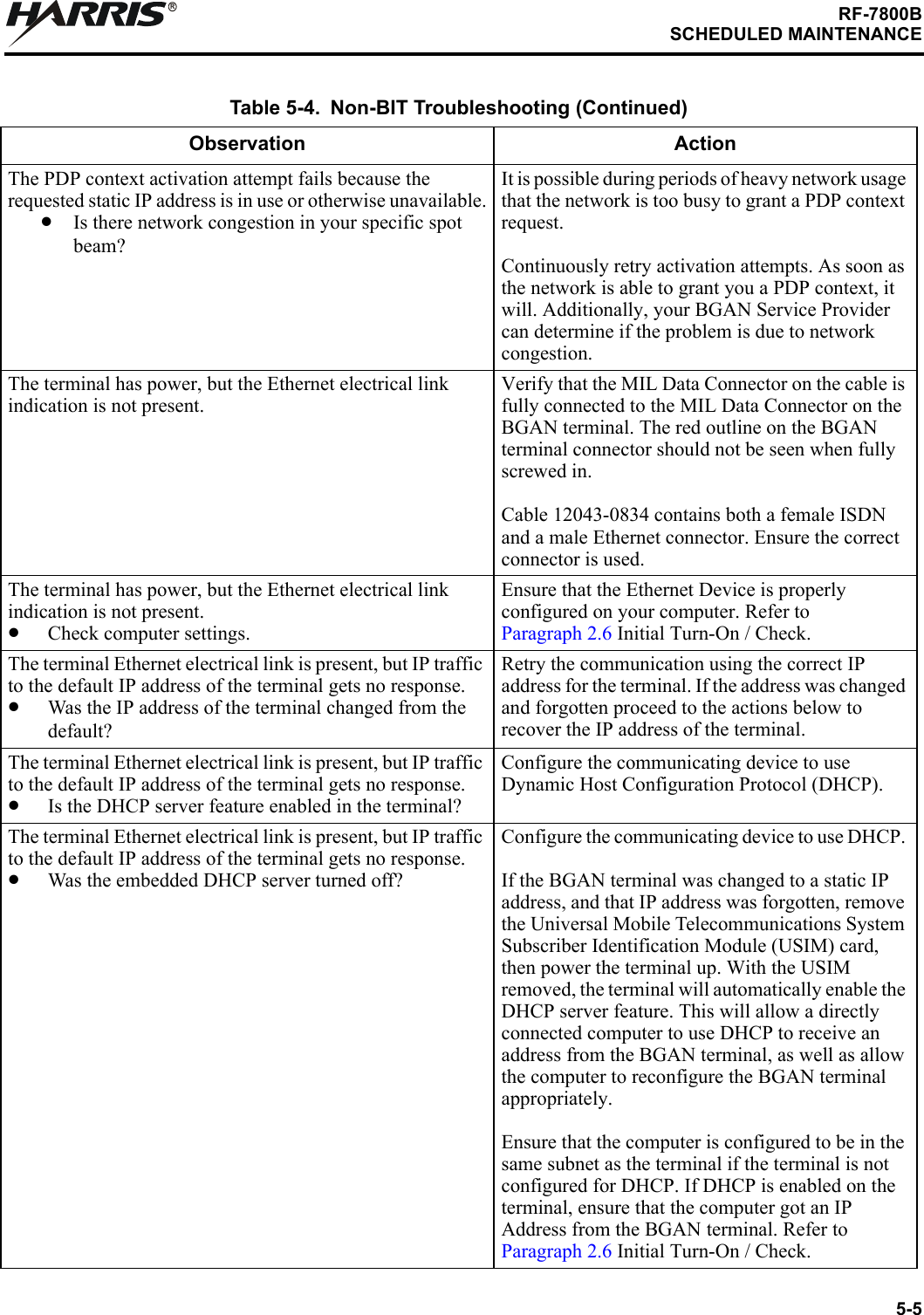
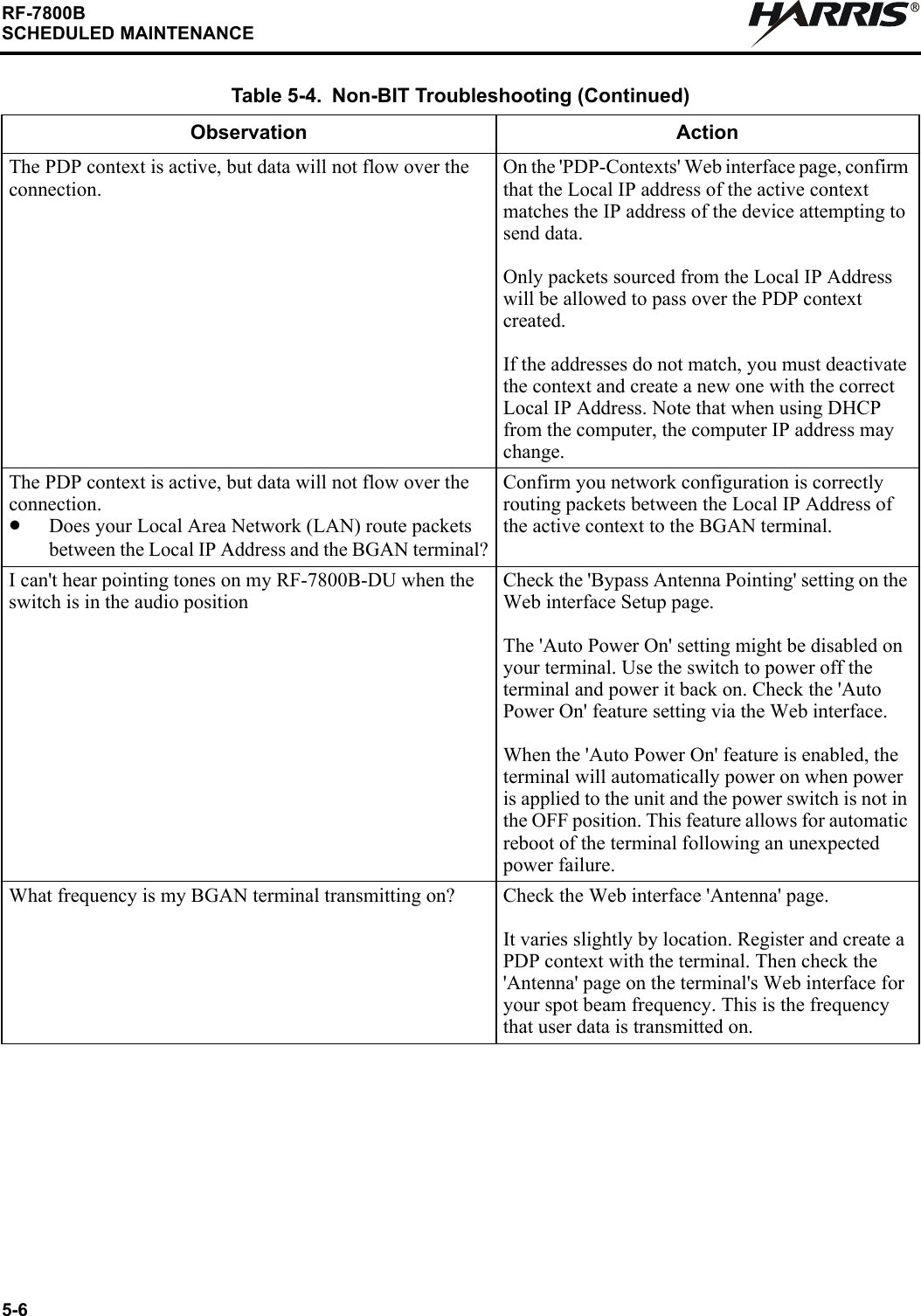
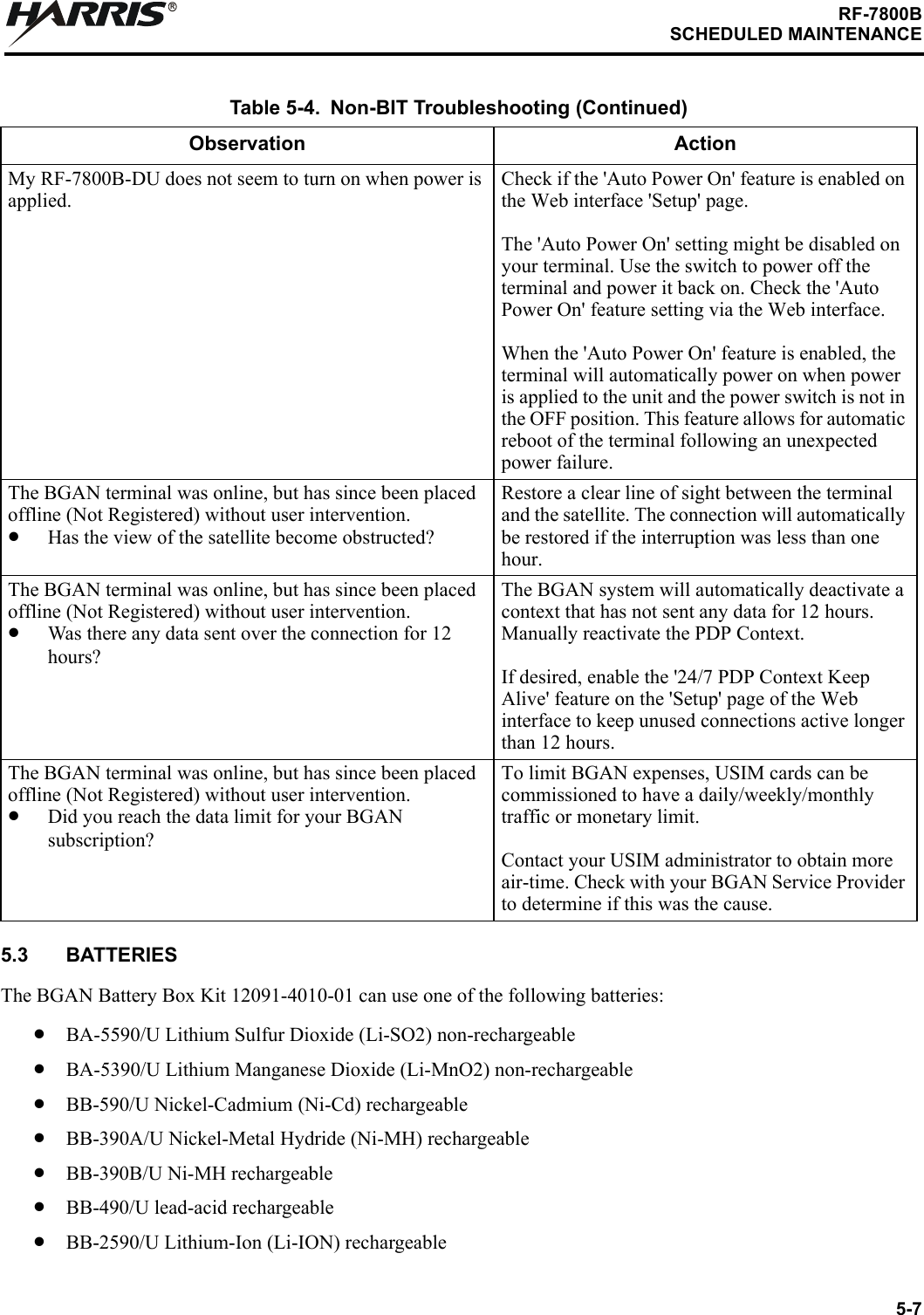
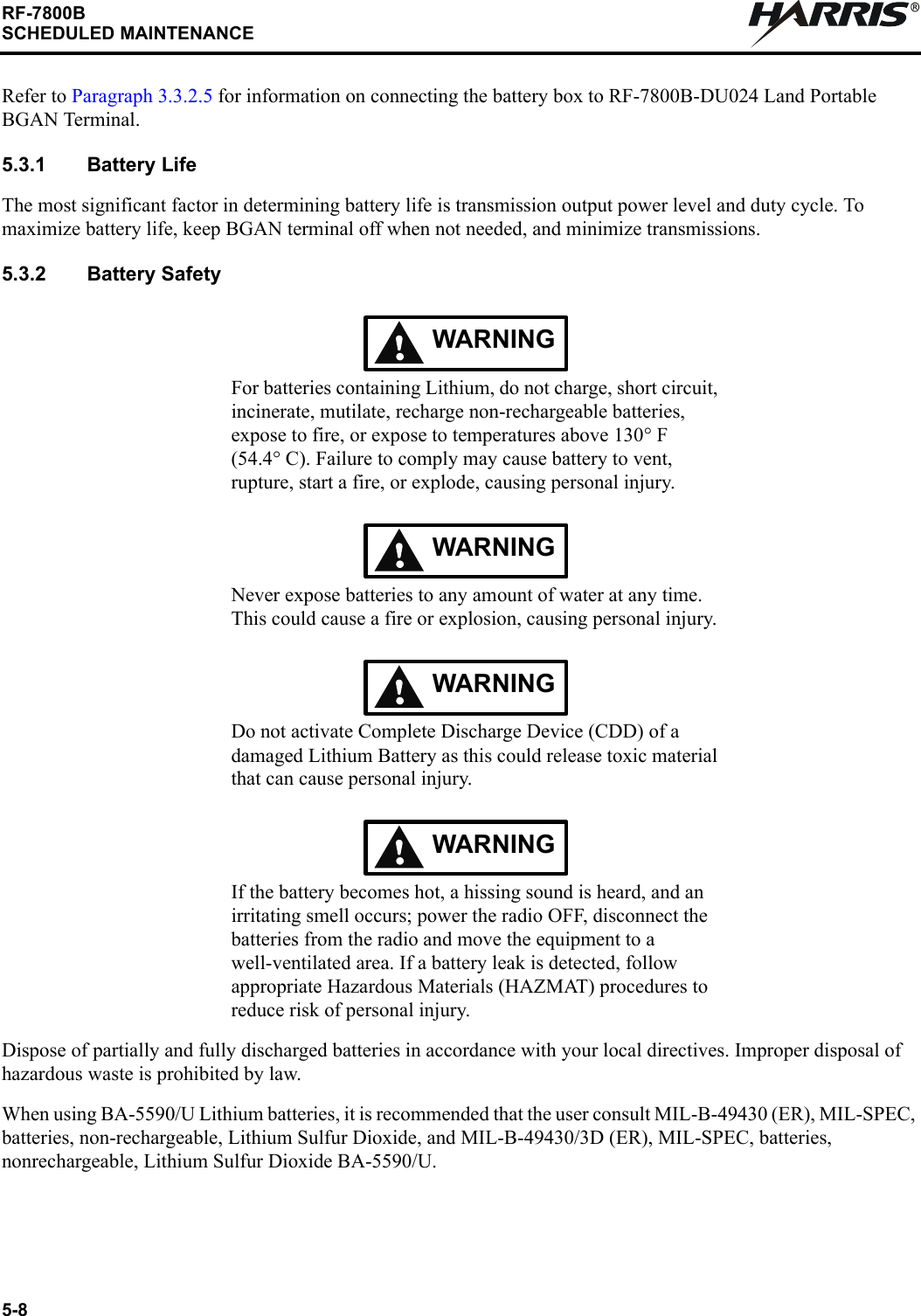
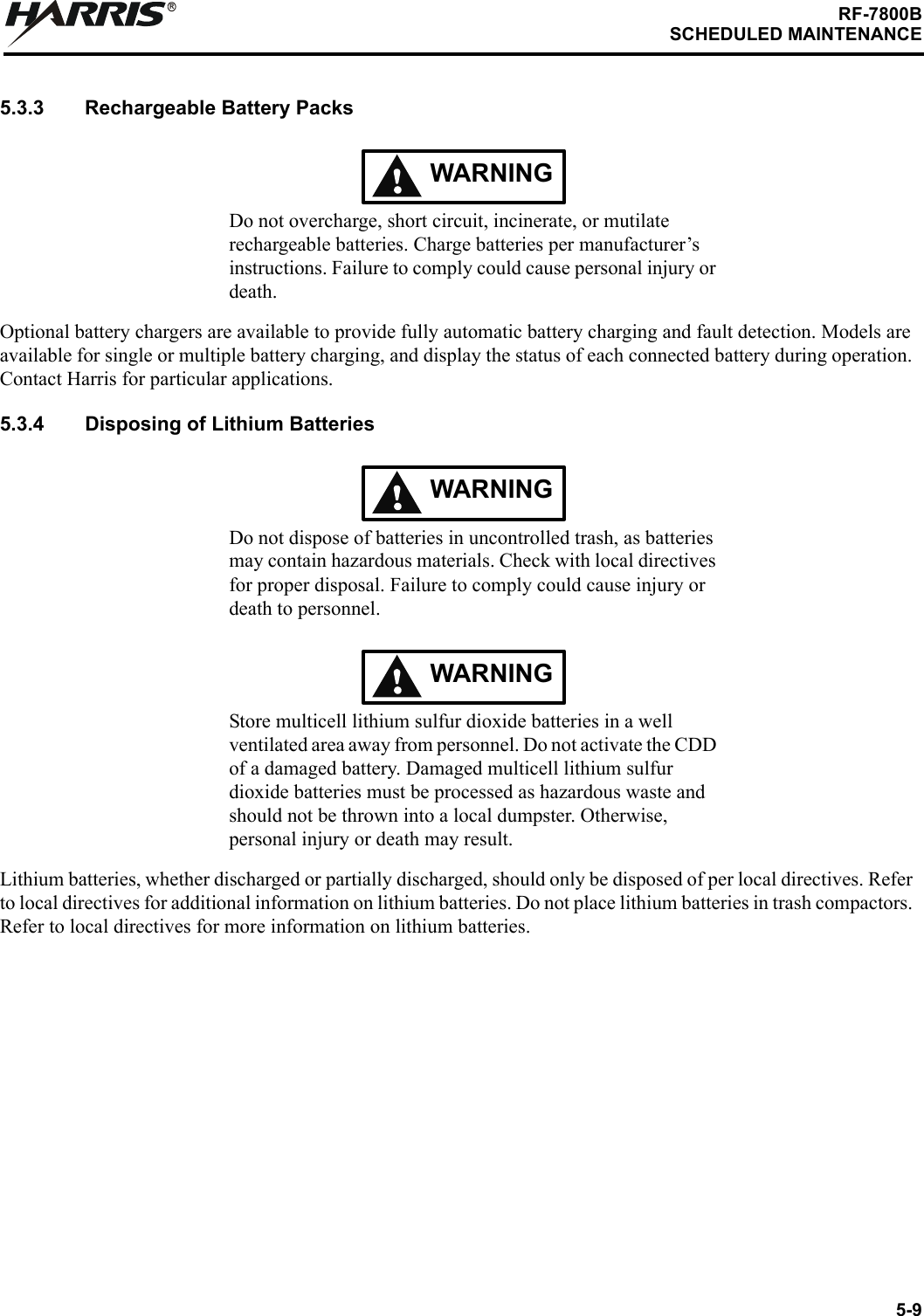

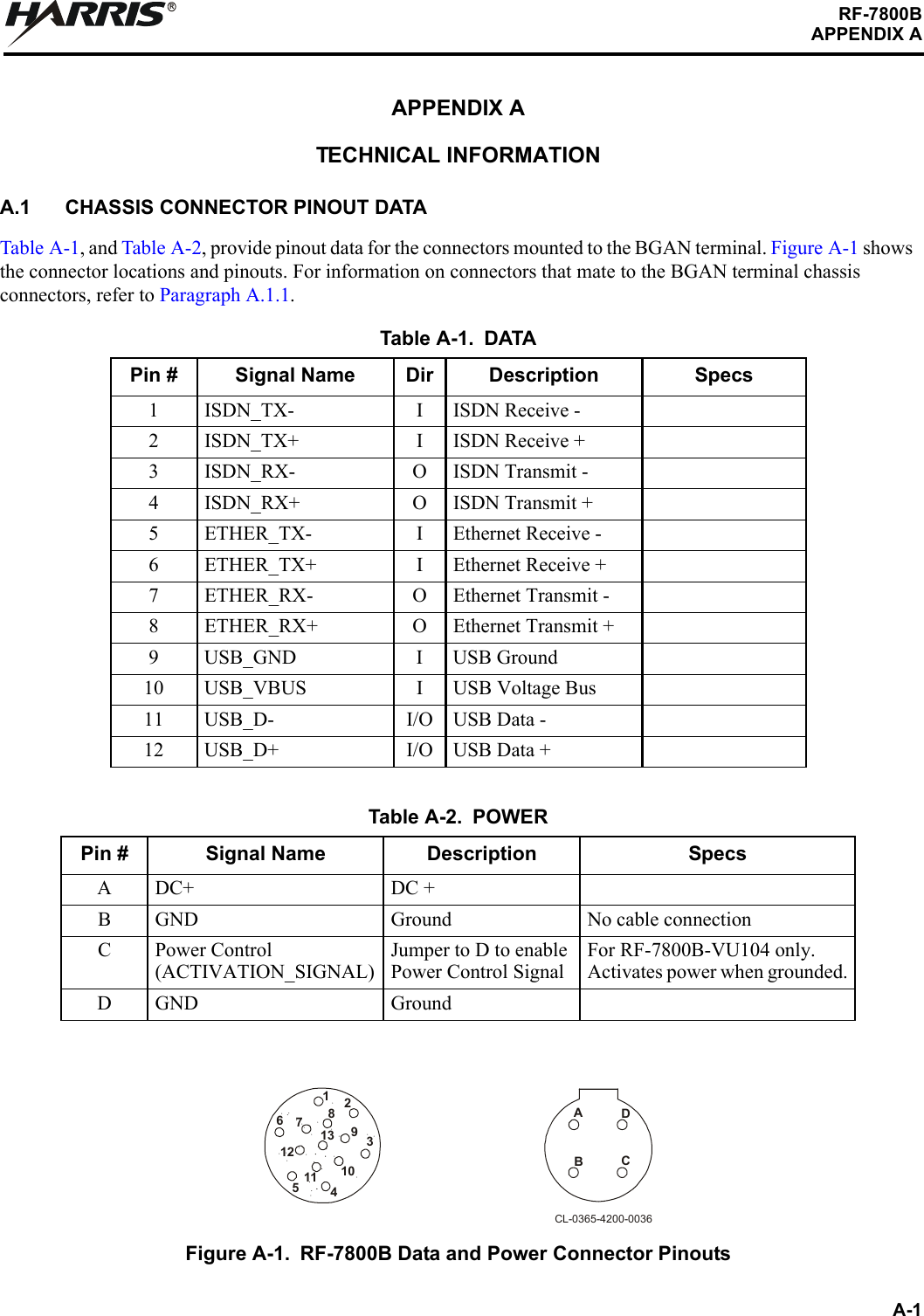
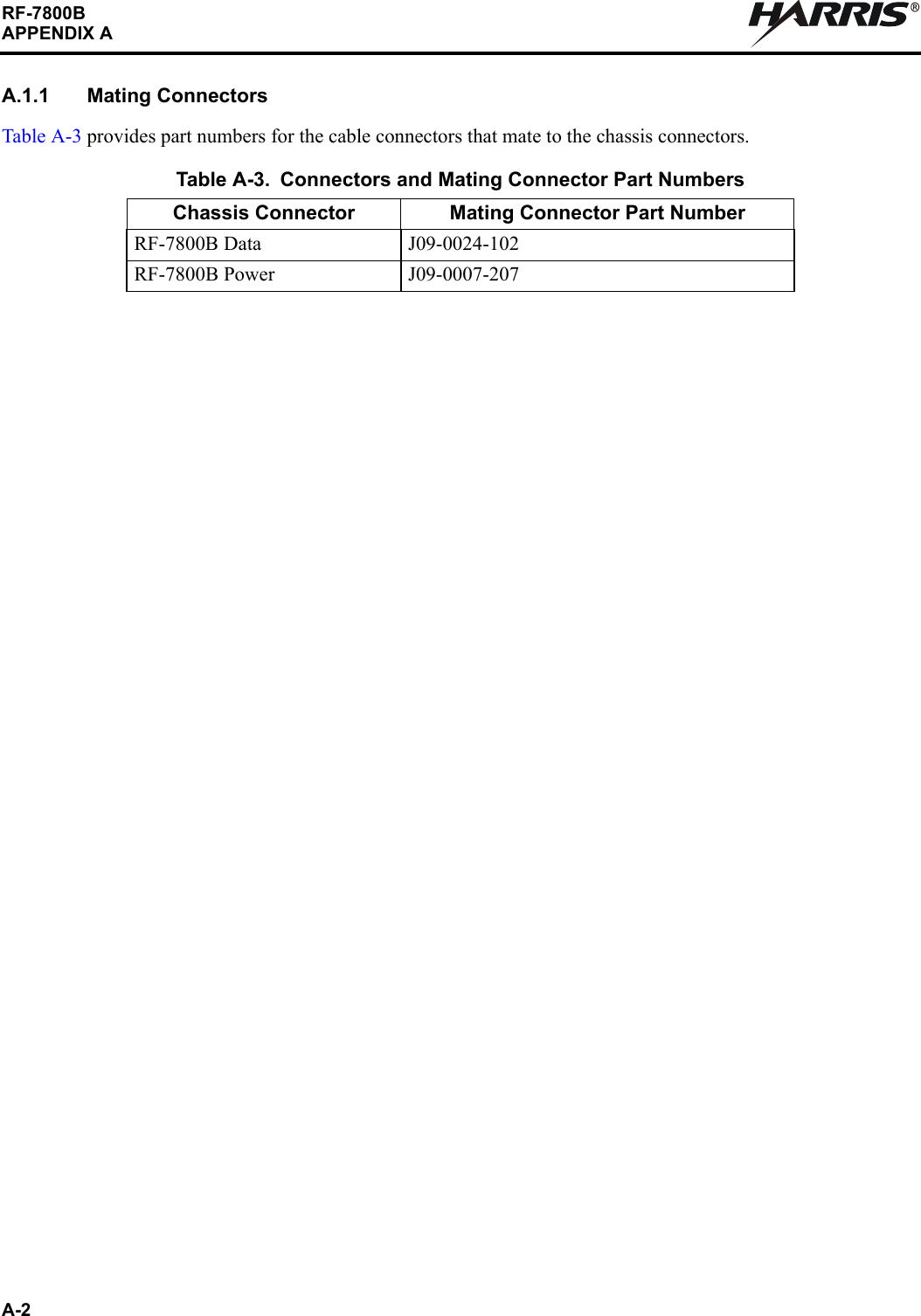
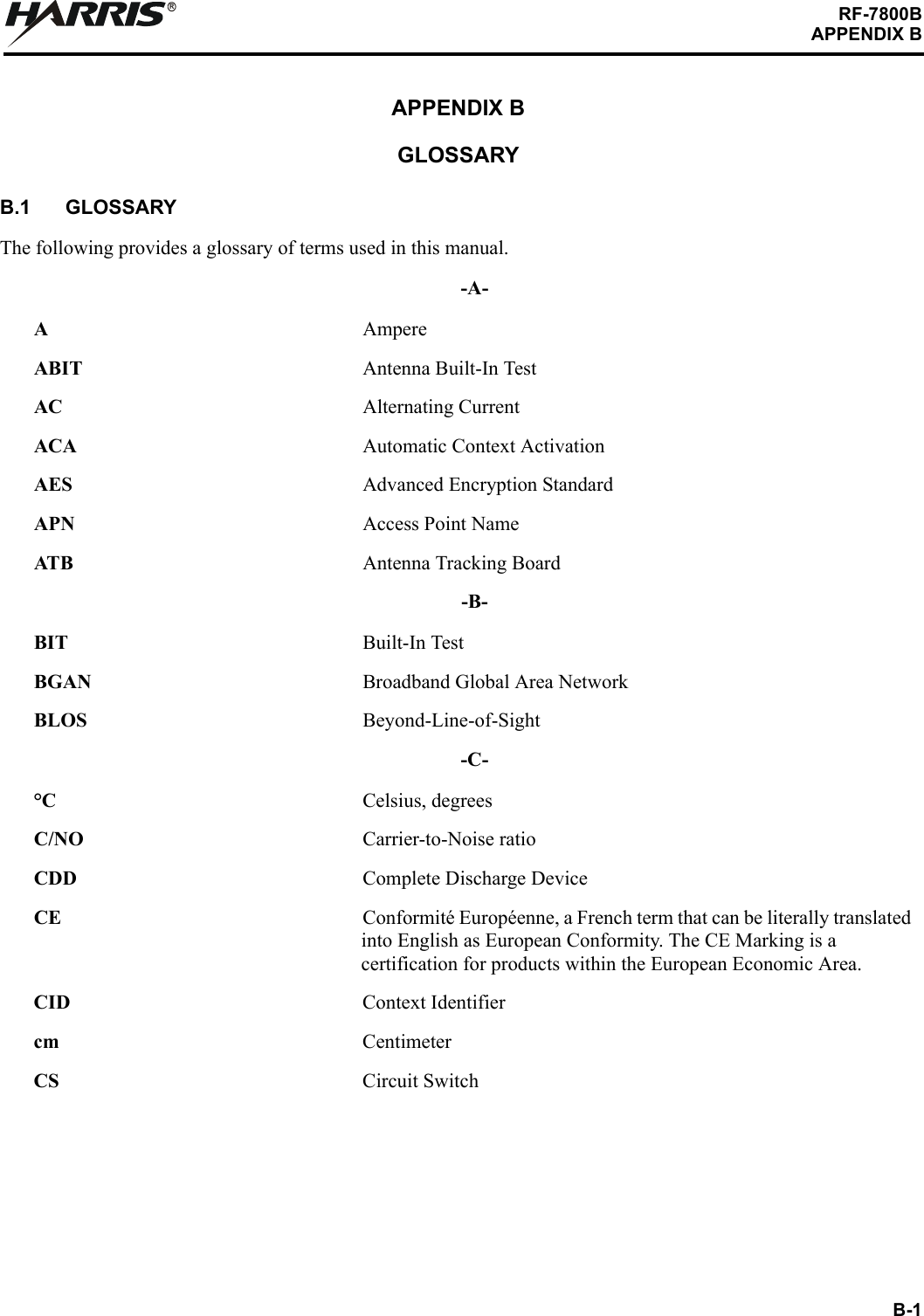
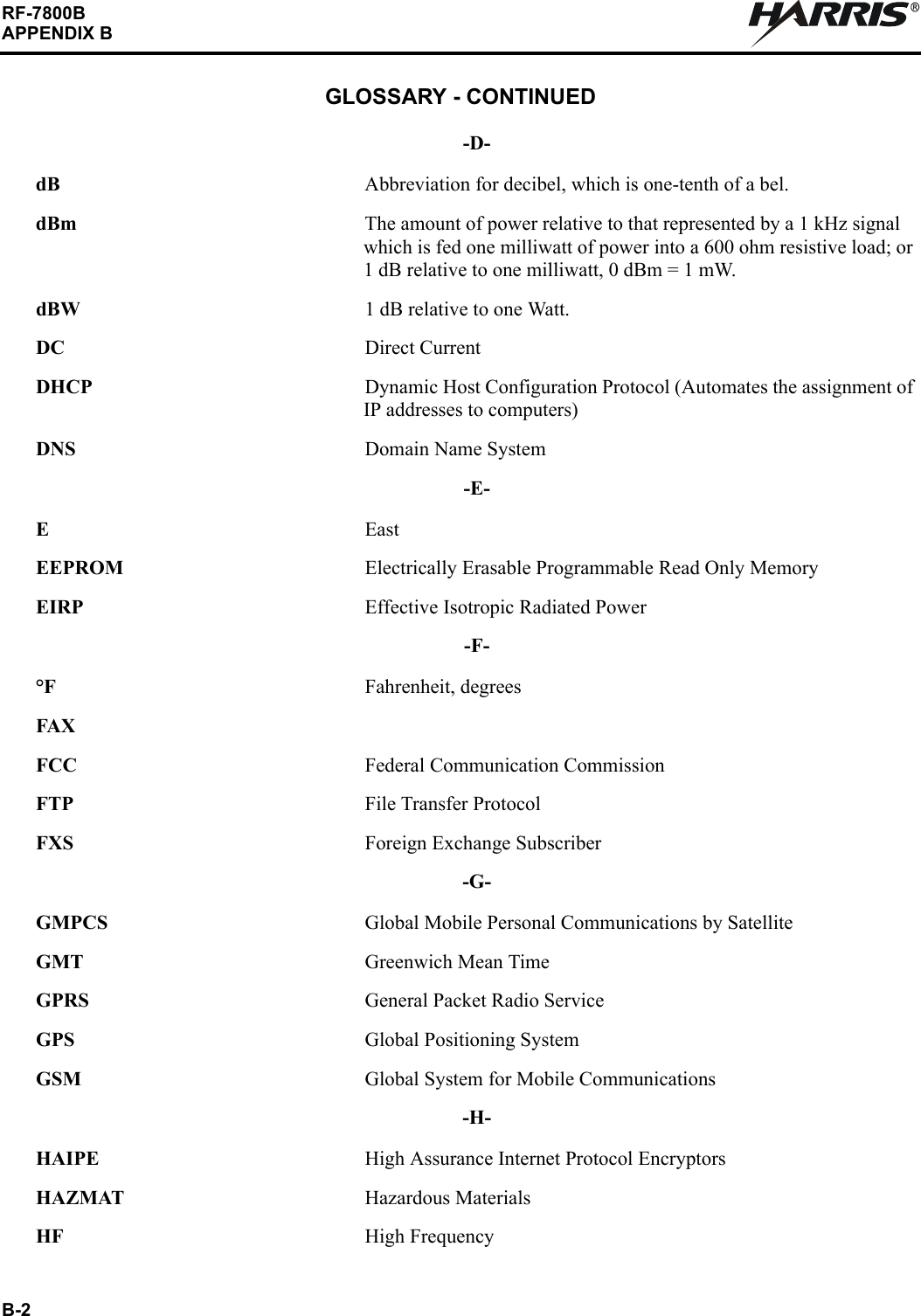
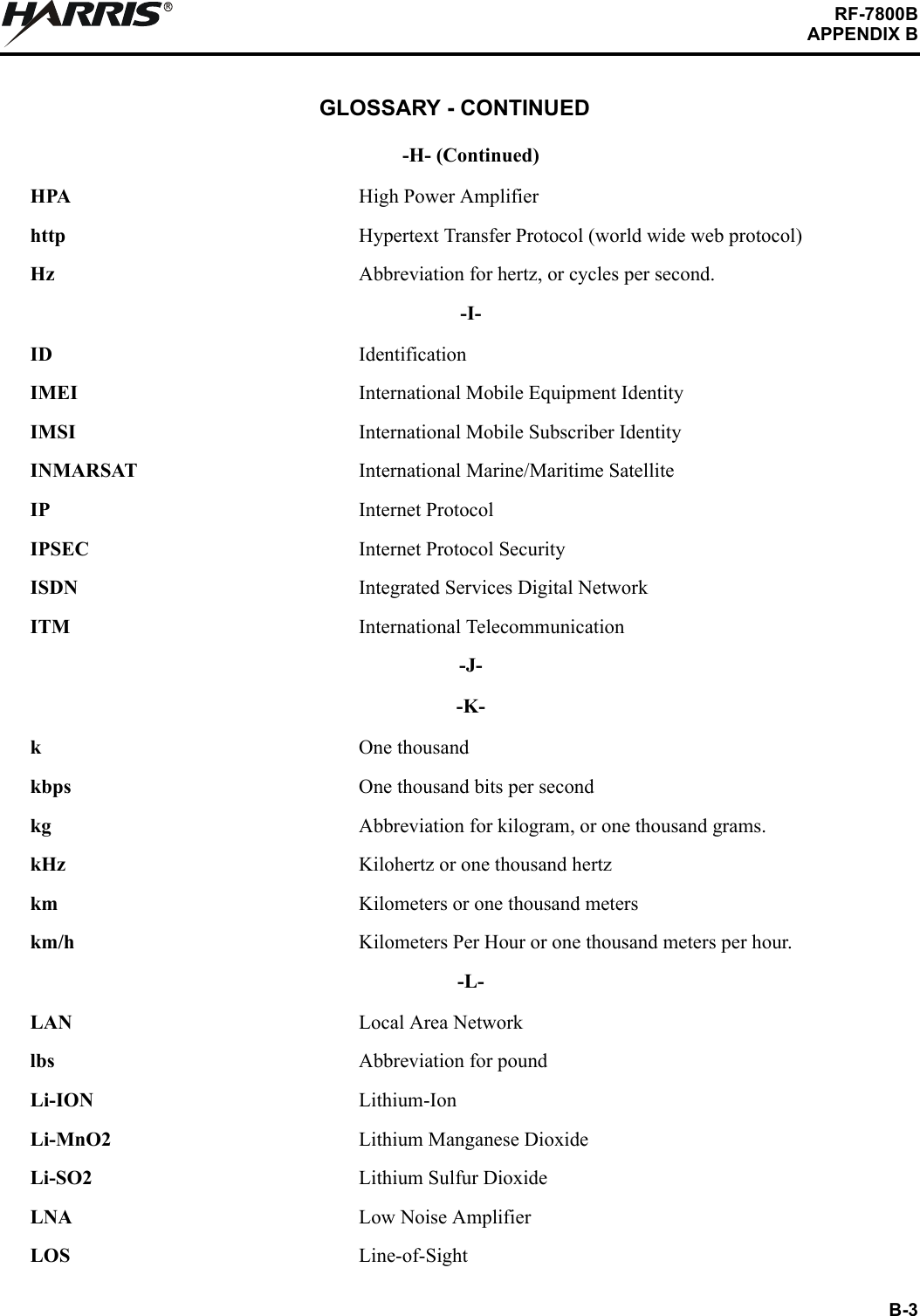
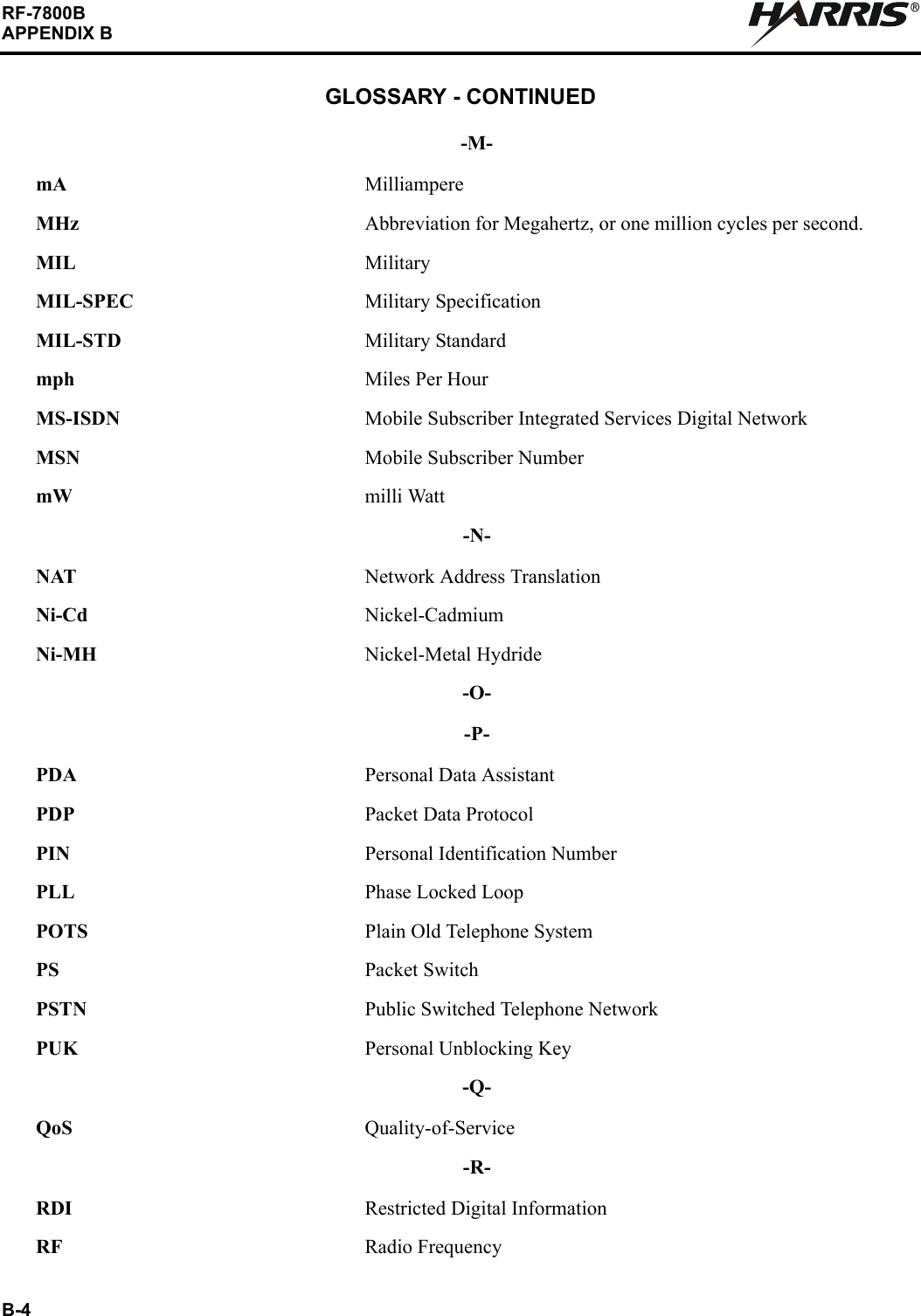
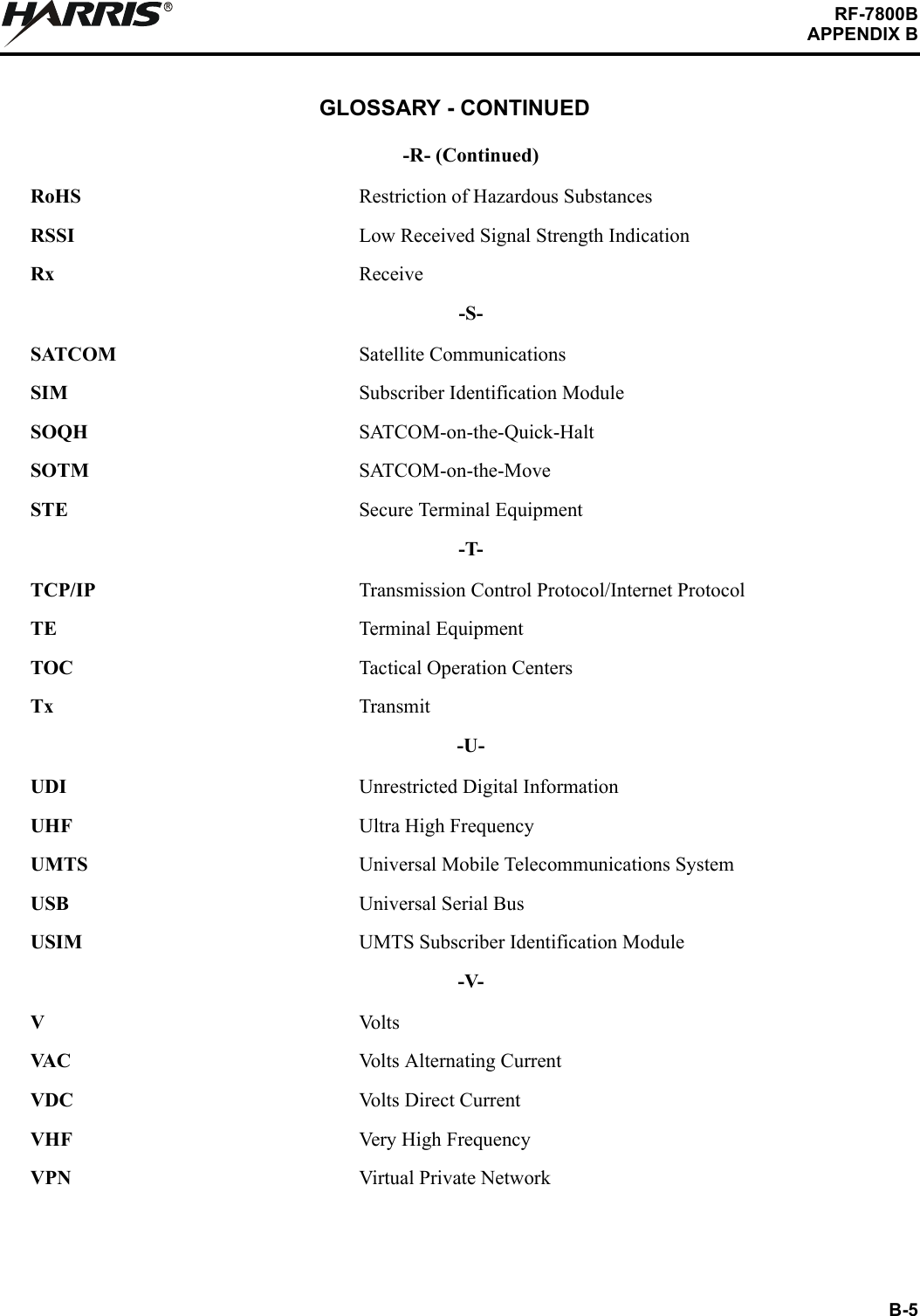

![TECHNICAL PUBLICATIONEVALUATION FORMTo the User of this Instruction Manual:HARRIS Corporation, RF Communications Division continually evaluates its technical publications for completeness, technical accuracy, and organization. You can assist in this process by completing and returning this form. Please specify section, page number, figure or table number where applicable.MANUAL TITLE:MANUAL NUMBER: REVISION: COVER DATE:GENERAL EXCELLENT GOOD FAIR POORTEXT [ ] [ ] [ ] [ ]SETUP/ALIGNMENT INST. [ ] [ ] [ ] [ ]TROUBLESHOOTING INST. [ ] [ ] [ ] [ ]TABLES [ ] [ ] [ ] [ ]ILLUSTRATIONS [ ] [ ] [ ] [ ]PARTS LISTS [ ] [ ] [ ] [ ]SCHEMATIC DIAGRAMS [ ] [ ] [ ] [ ]GENERAL COMMENTS: Please include your suggestions for improvements to the manual. Specify chapter, page, paragraph, figure number, or table number as applicable. Attach examples or extra pages if more space is needed.CHAPTER EXCELLENT GOOD FAIR POORINTRODUCTION/GENERAL INFORMATION [ ] [ ] [ ] [ ]OPERATION [ ] [ ] [ ] [ ]FUNCTIONAL DESC/THEORY OF OPERATION [ ] [ ] [ ] [ ]SCHEDULED MAINTENANCE [ ] [ ] [ ] [ ]TROUBLESHOOTING [ ] [ ] [ ] [ ]CORRECTIVE MAINTENANCE [ ] [ ] [ ] [ ]DOCUMENTATION [ ] [ ] [ ] [ ]INSTALLATION [ ] [ ] [ ] [ ]ACCESSORIES [ ] [ ] [ ] [ ]CUT HERE LEAF-043A MAP](https://usermanual.wiki/Harris-RF-Communications-Division/RF-7800B-VU104.user-man-part-4/User-Guide-1122439-Page-19.png)


